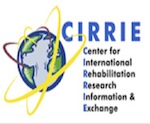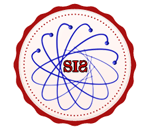


Google Scholar citation report
Citations : 5373
ASEAN Journal of Psychiatry received 5373 citations as per google scholar report
ASEAN Journal of Psychiatry peer review process verified at publons
| Journal Name | ASEAN Journal of Psychiatry (MyCite Report) | ||||
|---|---|---|---|---|---|
| Total Publications | 456 | ||||
| Total Citations | 5688 | ||||
| Total Non-self Citations | 12 | ||||
| Yearly Impact Factor | 0.93 | ||||
| 5-Year Impact Factor | 1.44 | ||||
| Immediacy Index | 0.1 | ||||
| Cited Half-life | 2.7 | ||||
| H-index | 30 | ||||
| Quartile |
|
- Anxiety Disorders
- Behavioural Science
- Biological Psychiatry
- Child and Adolescent Psychiatry
- Community Psychiatry
- Dementia
- Community Psychiatry
- Suicidal Behavior
- Social Psychiatry
- Psychiatry
- Psychiatry Diseases
- Psycho Trauma
- Posttraumatic Stress
- Psychiatric Symptoms
- Psychiatric Treatment
- Neurocognative Disorders (NCDs)
- Depression
- Mental Illness
- Neurological disorder
- Neurology
- Alzheimer's disease
- Parkinson's disease
Abstract
PSYCHOSOCIAL MORBIDITIES IN CHILDREN WITH MEDICALLY UNEXPLAINED PAIN SYMPTOMS: A STUDY FROM INDIA
Author(s): Sharmishtha S Deshpande, Vidya Ganapathy, Neelima BendreObjective: Medically unexplained pain is a common manifestation of psychological distress in children, though establishing this diagnosis is seldom an easy task. This study aimed to enhance and share clinical insights in the complex interplay of medical and/ or psychological factors in these children as revealed by multidimensional assessment, to help in their effective management. Methods: Researchers assessed 65 consecutive children with unexplained pain for more than a month, referred by the pediatrician. Of these, 59 consented and completed the interview. Clinical interview by psychiatrist generated psychiatric diagnosis as per ICD – 10 research criteria. The global functioning of the child (CGAS) and relational functioning of the family (GARF) were assessed before and after treatment. Psychosocial stresses were assessed clinically and treatments are given to the child and/or parent were recorded. The psychologist assessed the intelligence of the child using Raven’s Coloured Progressive Matrices and administered the Children’s Apperception Test (CAT). Results: A total of 38 (64.4%) children fulfilled the criteria for Persistent Somatoform Pain Disorder. Most of them (89.8 %) were undergoing personal, familial, and social stresses, many of which were revealed only after detailed clinical assessment. Major depression (28.8%), intellectual subnormality (11.9%), non-organic enuresis (8.5%) and ADHD (8.5%) were common co-morbid psychiatric diagnoses. Children with varying intellectual levels were proportionately represented and colored the clinical complexity. Repression and reaction formations were common defenses and fear of loss of the love of a parent, injury, being overpowered were common fears as revealed on CAT. Conclusion: Unexplained pain was often a somatic expression of emotional needs in these children. Psychosocial adversities were common and often causative. However being subtle, these were routinely unidentified. Precise assessment is the key to the effective management of these cases.


























